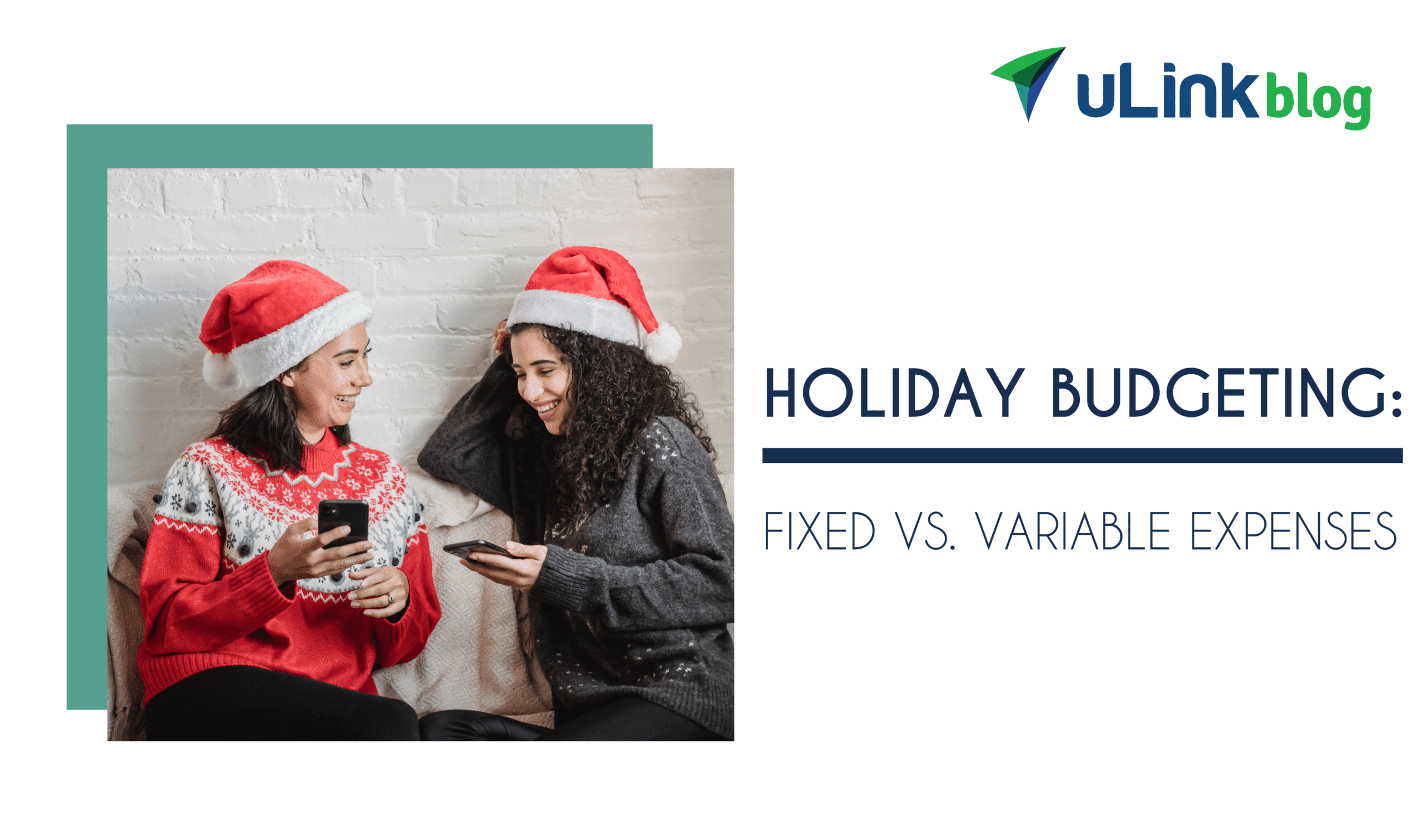
The holidays are almost here, and that can only mean one thing: it’s time to budget.
Of course, there’s always a difference between what we want to do and what we should do. Between Thanksgiving and New Year’s Day, consumer spending will reach stratospheric heights.
And for many Americans, one month of increased spending could wreak havoc for years to come.
That’s why budgeting is so important, especially in the weeks leading up to the holidays.
In order to maximize savings, you need to have a strategy in place. And in order to build a smart strategy, you need to understand the differences between fixed vs. variable expenses.
In this short article, we’ll explain the two categories of expenses, provide helpful examples for both, and introduce the secret to protecting your finances this holiday season.
Let’s get started!
What Are Fixed Expenses?
Fixed expenses are the most consistent charges in your budget.
They’re the ones you make on a monthly basis, or in other recurring timeframes: weekly, quarterly, biannually, or yearly. These are often referred to as “periodic fixed expenses.”
Even if you don’t pay an expense every month, you can still calculate its average monthly cost. For example, let’s say you pay $180 for a life insurance policy each quarter (or $720 annually). To calculate the average monthly cost, simply divide the payment premium by three. In this case, your average monthly cost would be $60.
Note: When it comes to budgeting, quarterly or biannual charges are often overlooked. Be sure to track down each recurring charge so you know exactly what you’re spending.
Examples of Fixed Expenses
Fixed expenses come in all shapes and sizes, including:
- Monthly rent or mortgage payments
- Utility bills (including your phone, internet, and cable)
- Car payments
- Student loan payments
- Personal loan payments
- Insurance premiums
- Childcare expenses
- Subscription services
- Streaming services
- Gym memberships
- Tuition fees
Remember: anything you pay on a monthly or semi-recurrent basis is a fixed expense.
What Are Variable Expenses?
Variable expenses are less predictable than their fixed counterparts.
While it’s true that variable expenses can be made with some regularity, they’re largely influenced by your daily (and weekly) choices.
Due to their unpredictability, variable expenses can make budgeting far more difficult.
In many cases, variable expenses constitute “impulse buys,” like grabbing a milkshake or splurging on tickets to a concert. And during the holidays, 1 in 3 purchases are made on impulse.
In other scenarios, variable expenses can become add-ons within a previously fixed expense.
For example, a consumer might decide to buy a $20 movie on their favorite entertainment platform (Amazon Prime, for example), doubling the subscription’s monthly cost with the click of a button.
Finally, variable expenses can come in the form of emergency costs, like a costly medical bill.
While variable expenses are inevitable, they can still be controlled and moderated with the right amount of planning and patience.
Examples of Variable Expenses
Variable expenses cast a very wide net, including:
- Grocery bills
- Dining out (and delivery)
- Entertainment purchases
- Clothing costs
- Personal care
- Emergency medical bills
- Home repairs
- Auto repairs
- Gasoline
How To Save Money This Holiday Season
Before Santa crawls down the chimney, it’s time to answer the all-important question:
is holiday spending considered fixed or variable?
Let’s see: plane tickets, pumpkin pies, peppermint lattes, Christmas trees, party platters, brand-new gifts, champagne bottles, and more…?
Indeed, there’s little doubt that the holidays represent an entire season of variable spending.
In fact, the average household will spend nearly $1,500 on holiday purchases alone by the first day of 2023. Spread that cost out over an entire year, and it’s worth an extra $125 a month.
Here’s the catch: if you can budget for the holidays like it’s a fixed expense, your finances will be far better off.
In other words, build a budget ahead of time, decide exactly how much you’ll spend (on travel, food, gifts, etc.), and commit to staying within the limit.
To help you on your mission, we encourage you to consider employing the “envelope budget” strategy. Here, you divide your income into several essential categories—like your rent, your groceries, your gasoline, and yes, your holiday spending.
Then, write each category on a physical envelope, and insert a set amount of cash into each folder.
Once you spend all the money, you’ll know you’ve reached your limit. And if you have a little cash left over in one category, you’ll have the option to use it in another.
Note: if using physical envelopes and cash seems tiresome, you can follow the same process through Goodbudget, right on your smartphone or tablet.
Moving Through December and Beyond
The holidays really are the most wonderful time of year.Amid the excitement, we encourage you to design a plan for your spending so you can enjoy the season without breaking the bank.
Take some time to review your fixed and variable expenses. Then, build a budget that feels reasonable, and stick to it as best you can.
At the end of the day, you’ll have greater confidence in your finances and more flexibility to protect your loved ones back home.
At uLink, our mission is to help you support your family to the fullest extent. That’s why we provide great exchange rates, fees starting as low as $0, and service that’s fast, reliable, and secure.
Miles from home—just moments away with uLink.









